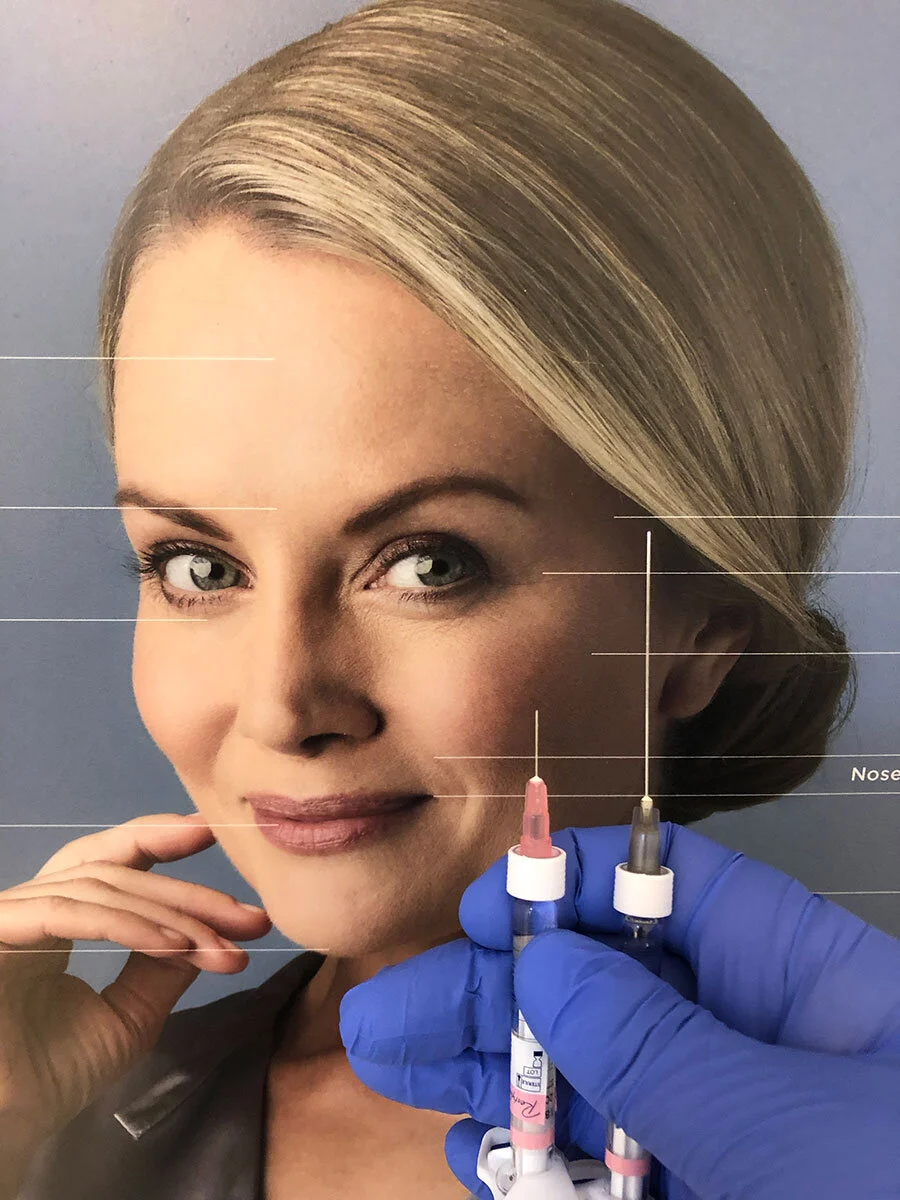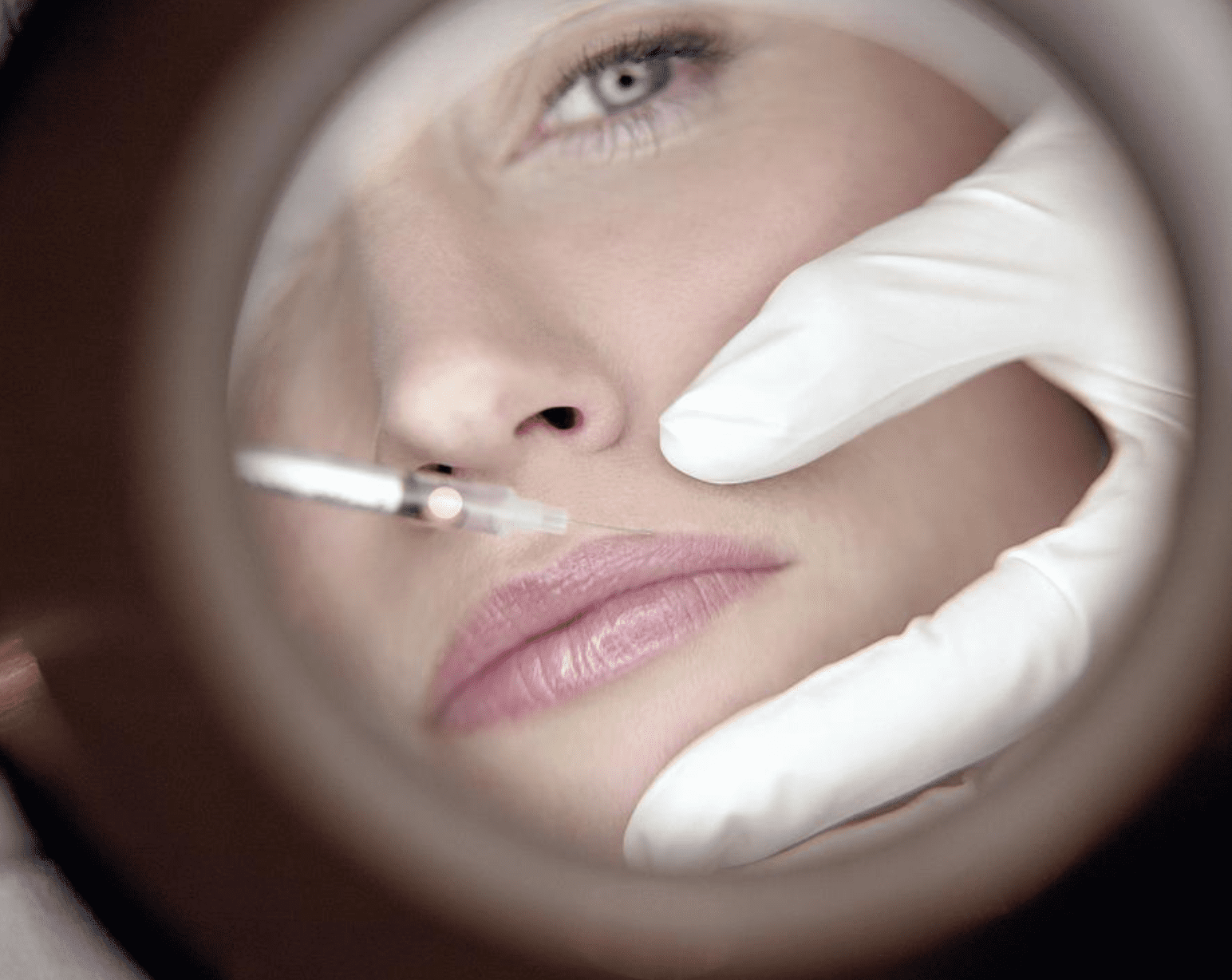Dermal fillers are gel-like products comprised of hyaluronic acid. When injected into the skin they enhance contours, support sagging skin and replace lost tissue volume.
_____
While traditionally these fillers have always been injected using sharp tip needles, an alternative to needles involves using blunt-tipped cannulas. We take a closer look at both methods of injection, their benefits, and cases when sharp needles may still be the right choice.
What is the difference in the preparation required?
When injecting with a needle, it is common for the practitioner to prepare the treatment area with the application of numbing cream and application of ice prior to injecting, to maximise patient comfort. A local anaesthetic may also be utilised for some areas. Because a needle has a sharp tip, it glides through the skin with ease. Multiple insertion points are required for needle delivery of dermal filler as a needle is much shorter than a cannula.
When injecting with a cannula – because the tip is blunt – a small opening in the skin must be created prior to insertion of the cannula. The area for the skin opening is initially injected with a local anaesthetic to numb the area and then a needle is used to create the opening and the cannula is then inserted through this opening.
_____
Blunt tipped cannulas for dermal fillers
Cannulas have a hollow bore, just like needles, allowing the filler to pass through into the tissue. However, instead of sharp tip like needles, cannulas have a rounded, blunt end. The process involves numbing the skin with ice, then injecting a small amount of local anaesthetic beneath the skin with a small needle.
When the skin is numb, a needle is used to pierce the skin, and then the cannula is inserted into the opening. Usually, just one opening is required per side of the face, but sometimes two or three openings are required if multiple areas are being treated.
The benefits of the cannula method for injecting fillers
- Less painful during treatment — Being injected multiple times with sharp needles can be painful, but while it may sound a bit uncomfortable to have a cannula beneath your skin, there’s very little discomfort.
- Fewer entry points — A much larger surface area can be treated with just a single injection site when using the cannula method, making it possible to achieve more, with fewer injection points. Cannulas are long and flexible and can be manoeuvred in multiple directions.
- Less bruising – Because the tip is blunt, it is less likely to penetrate a blood vessel and so bruising is less common.
- Reduced risk for vascular occlusion – This is perhaps the most important benefit of a cannula. Because the tip is blunt, it is less likely to penetrate a blood vessel and so the likelihood of dermal filler being injected into a blood vessel, although rare with either method, is reduced.
Although the cannula has the benefit of only requiring one entry point, the movement of the cannula into the different areas and layers of the skin can cause a pushing or tugging sensation which some patients find uncomfortable.
One of the other drawbacks is that some practitioners can have a false sense of security when using a cannula and can have a tendency to inject greater volumes of product. If force is used in pushing a cannula through areas of resistance, a blood vessel can be penetrated. However, vascular occlusions are rare and are more common with needle use.
_____
Sharp needles for dermal fillers
Sharp tip needles use a very thin, short, sharp needle to inject dermal fillers. When using needles, multiple injection points are required.
The benefits of the needle method for injecting fillers
- Precision – A needle is very precise. When a very small amount of filler is needed for touchups or fillers are injected in small places like the cupid’s bow of the upper lip or in the temples, a needle is the best option.
- Ease – A needle can easily glide into the various layers of the skin and underlying tissues with little preparation required.
- Injecting accurately on the bone – this is often the safest area to place dermal filler and it also gives very natural results with less migration of the filler and the overlying structures move normally in expression without the filler moving with expression. Injecting directly on the bone such as the orbital rim, the nose, the temple, the cheekbone, the chin, or the jawline is more accessible and more accurate with a sharp needle.Sharp tip needles may result in a higher occurrence of bruising or swelling. Needles are shorter than cannulas and so require multiple entry points which can be associated with increased patient discomfort. Vascular occlusion risk is greater with needle delivery of dermal filler but perhaps the tissue necrosis that can follow tends to be less severe than when it occurs with a cannula.
_____
Which is better, cannula or needle?

“The most important factor, regardless of choice of method of delivery of dermal filler, is that your practitioner is very experienced, practices with due caution and with an emphasis on safety.”
Dr Michael O’Gorman
Some practitioners prefer working with a sharp needle, others prefer working with blunt cannulas, and most work with both. The most important factor, regardless of choice of method of delivery of dermal filler, is that your practitioner is very experienced, practices with due caution and with an emphasis on safety.
Once you know you are in safe hands, you can expect your practitioner to choose the method of delivery that best suits the area being treated and with which they are most comfortable using.
I would suggest having this conversation with your doctor during the consultation. Ask them about their level of experience, which method they will use and why, ask about pain management, and ensure they have hyaluronidase (filler dissolving) readily available in the clinic in the event that a vascular occlusion was to occur.
Don’t be afraid to check their registration on the AHPRA website to ensure they are a registered health professional and whether there are any restrictions on their registration.
Personally, I like to inject on the bone as much as possible. I find this gives the most natural results, lasts longer, is less likely to migrate, and does not interfere with facial expressiveness. I use a needle more frequently than a cannula as I can glide the needle directly to the bone with ease. Because I have been performing cosmetic procedures for seventeen years, I am able to keep bruising to a minimum. I also practice cautiously with an emphasis on safety.
Areas that I prefer to treat with a needle and with product placement on the bone include the under-eye area, the nose, the temples, the cheekbones, the chin, and the jawline. For lip enhancement, I like to not only volumise but to also define the lip border, shape the cupids bow and philtrums, and support the corners of the mouth against downturning. It is not possible to treat the lips in such a comprehensive way without using a needle.
Areas where I feel that a cannula is preferable includes the forehead, treating the hands or restoring volume to the mid-face. A cannula can follow the natural jawline nicely too.
